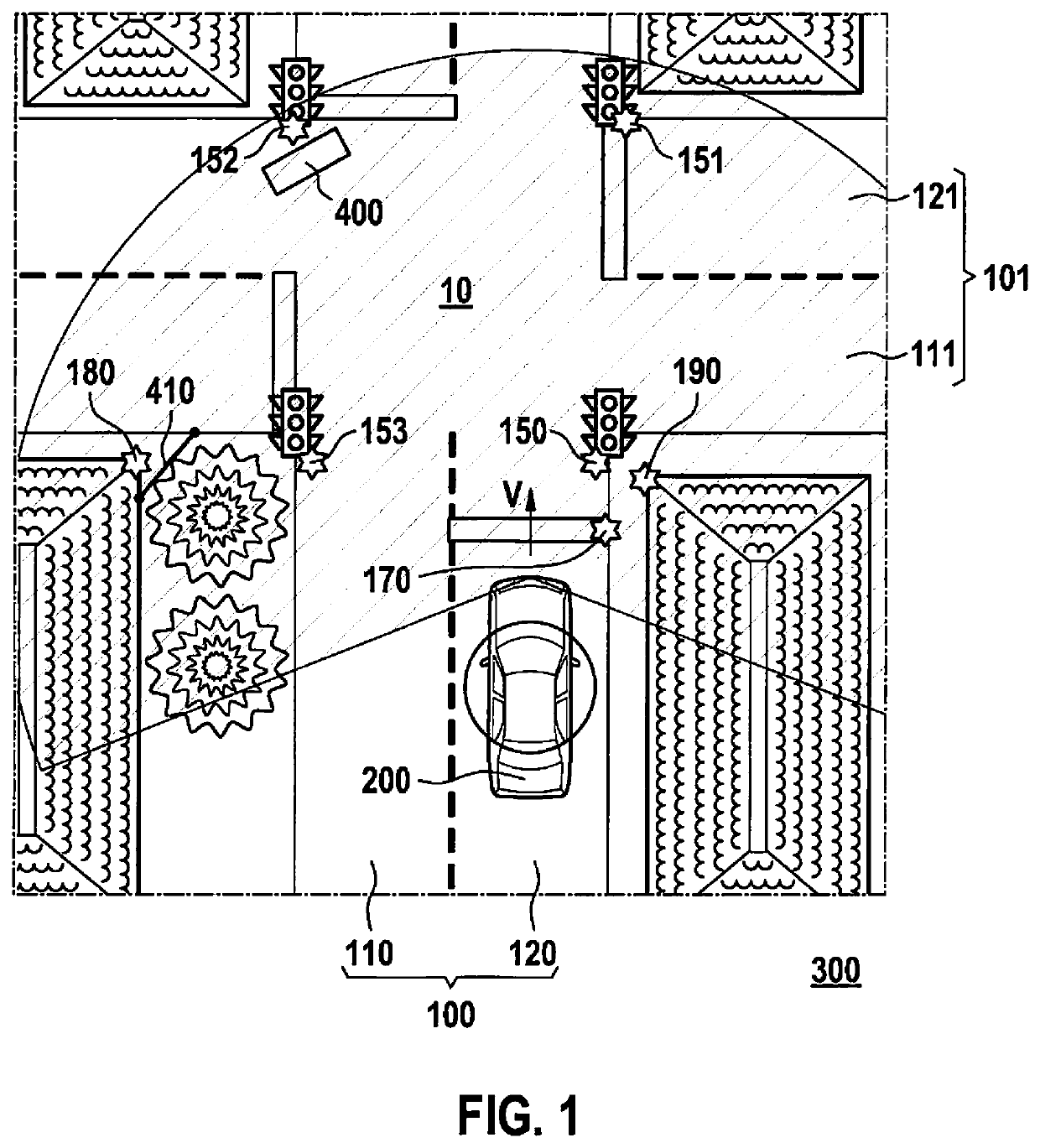Method for localizing a more automated, e.g., highly automated vehicle (HAV) in a digital localization map
a technology of highly automated vehicles and localization maps, applied in vehicle position/course/altitude control, using reradiation, instruments, etc., can solve the problems of unnecessary transmission of data, landmarks may also be hidden and therefore cannot be sensed by the hav, and the use of ever more complex driver-assistance systems is being employed, so as to improve the robustness and accuracy, neither time nor computing capacity is wasted
- Summary
- Abstract
- Description
- Claims
- Application Information
AI Technical Summary
Benefits of technology
Problems solved by technology
Method used
Image
Examples
Embodiment Construction
[0030]FIG. 1 shows a traffic junction 10 at which two road sections 100, 101, each having two lanes 110, 120, 111, 121, intersect, that are drivable by a more automated vehicle, especially by a highly automated vehicle (HAV) 200. The traffic at traffic junction 10 is regulated, inter alia, by traffic lights 150, 151, 152, 153. In addition, a first building corner 180 and a second building corner 190 are located in the surroundings of traffic junction 10. For the purposes of this example, it shall be assumed that traffic lights 150, 151, 152, 153, building corners 180, 190 as well as a stop line 170 are available in geo-referenced form and as permanent landmarks for generating a digital driving-environment model.
[0031]That means that, for example, certain features of building corner 180 necessary for recognizing building corner 180, as well as its position in a suitable coordinate system are stored in a data store in digital form and for creating a driving-environment model for a HAV...
PUM
 Login to View More
Login to View More Abstract
Description
Claims
Application Information
 Login to View More
Login to View More - R&D
- Intellectual Property
- Life Sciences
- Materials
- Tech Scout
- Unparalleled Data Quality
- Higher Quality Content
- 60% Fewer Hallucinations
Browse by: Latest US Patents, China's latest patents, Technical Efficacy Thesaurus, Application Domain, Technology Topic, Popular Technical Reports.
© 2025 PatSnap. All rights reserved.Legal|Privacy policy|Modern Slavery Act Transparency Statement|Sitemap|About US| Contact US: help@patsnap.com


